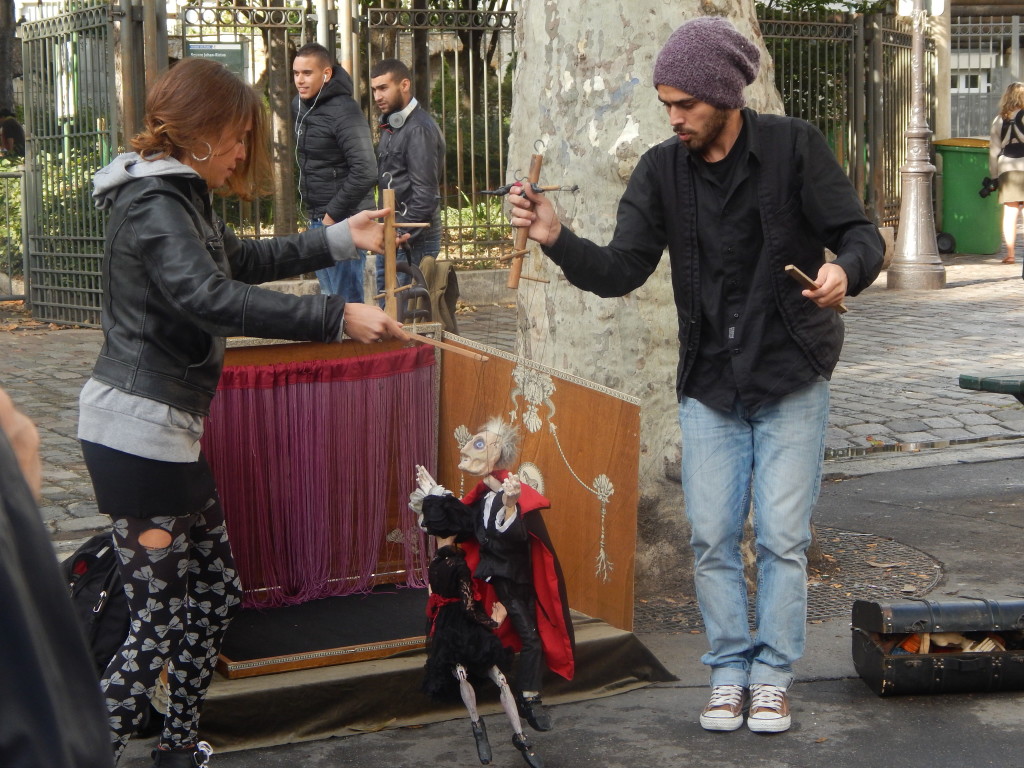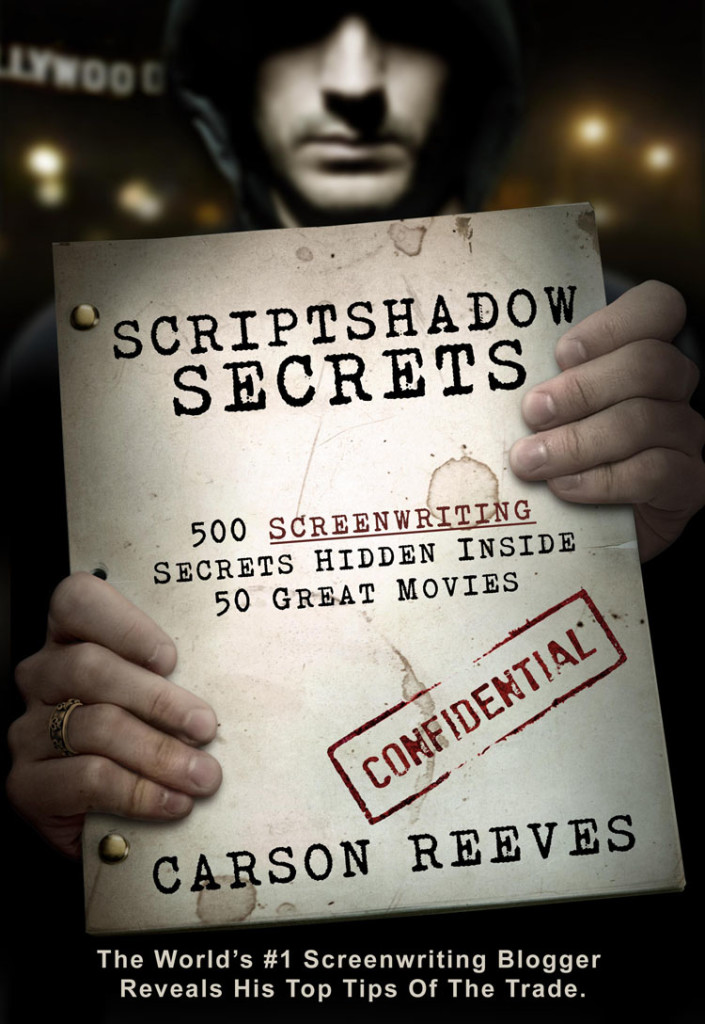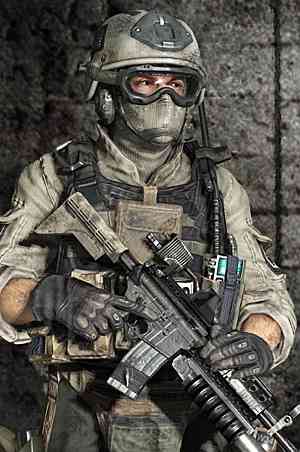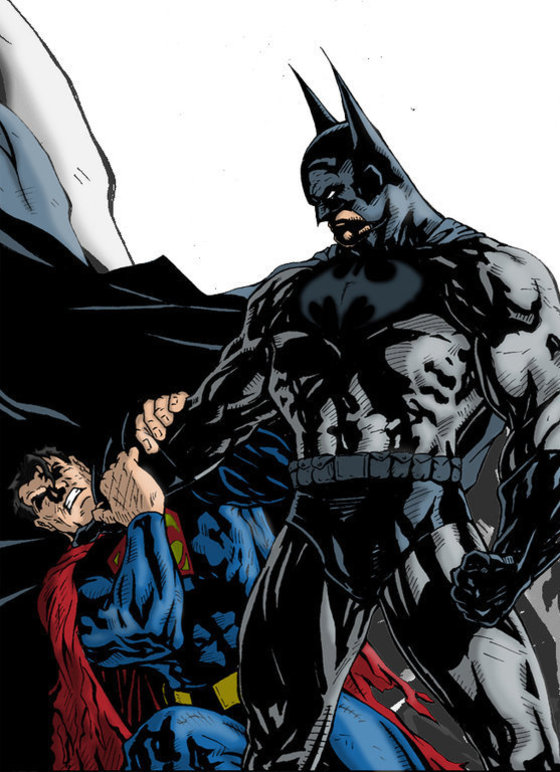Note: If you are a French screenwriter and want to prove that your script is so much better than the kind of films France is making, send it to me at carsonreeves3@gmail.com. I’ll review whatever query best catches my interest. Include the title, logline, and script attachment!
Genre: Dramedy (foreign)
Premise: (from IMDB) After he becomes a quadriplegic from a paragliding accident, an aristocrat hires a young man from the projects to be his caretaker.
About: The Intouchables became the highest grossing non-English-speaking movie in France’s history, taking in 166 million dollars. But what’s really surprising is how well it did internationally, taking in 281 million dollars, unheard of for a French film. The film won many awards, including the Cesar for co-lead Omar Cy. In short, it’s the best film to come out of France in years. The film is available for free on Netflix streaming right now!
Writer: Olivier Nakache and Eric Toledano
Details: 112 minutes
Bon Appetit!
Oui, you read that right. It’s FRENCH WEEK. I’ve been so inspired by the Musee D’Orsay, the Tour D’eiffel, the Metro, the patisseries, the boulangeries, the pan au chocolates, that I couldn’t NOT do a French week. I mean take a stroll through Montmartre (where Amelie was filmed) and tell me you wouldn’t trade your eldest son to live there for just one day.
Also, while in France, I learned a lot about the French movie industry and why they make such crappy movies. I’m going to save those discoveries for Thursday but let’s just say it’s a LOT easier now to understand why French movies are so terribaux.
Which makes the success of today’s movie all the more confusing. The Intouchables was that rare French film that got it right. Despite seemingly taking the same approach as most other French films (a fairly plot-less drama focusing on the lives of people with the occasional touch of comedy). For that reason, I had to look closer. What made this film break out of a formula that, according to most moviegoers, doesn’t work? Because I’ll be honest, I haven’t been the biggest French film fan. But this one was good. And I believe it comes down to the script (doesn’t it always!). It may behoove the French to take a better look at this script, then, to understand why The Intouchables found so much success.
For those who haven’t seen it, The Intouchables is about a very rich Frenchman, Philippe, who was paralyzed after a hang-gliding accident. Years later, he lives in his beautiful mansion, bound to a wheelchair as a paraplegic, millions of dollars in his bank account, yet not a single penny can give him what he wants most, to move again. To put it bluntly, Philippe’s life is at a standstill.
To make matters worse, everyone who does come in contact with Philippe (his business associates, his lawyer) treat him with pity. And there’s nothing Philippe hates more than pity. Enter Driss, a blunt African immigrant who’s applying for a job as Phillipe’s caretaker. The funny thing is, Driss doesn’t want the job. He just wants his application signed so he can claim that he APPLIED for the job, which will allow him to keep collecting welfare.
Of course, Driss’s casual reaction to Philippe’s disability is exactly what Philippe’s been looking for! So Driss quickly finds himself hired. The two become friends almost immediately, with Driss not afraid to make fun of Philippe’s shortcomings. Driss teaches Philippe to not be so uptight all the time and Philippe teaches Driss about art and culture.
Eventually, Driss learns that Philippe has been exchanging letters with a woman he’s never met. The two have formed a close relationship, but she doesn’t know about Philippe’s disability. Driss encourages Philippe to send her a picture, which Philippe does, though he secretly sends one of himself before the accident. Eventually, the moment comes where the woman wants to meet, and Philippe will have to decide whether to take what he learned from Driss and show up or throw a shot at happiness away.
At first, it’s hard to determine why this movie works. From a traditional standpoint, it’s kind of strange. In these stories where there’s a central coupling, there’s almost always a clear conflict between that couple. For example, when you have a love story, the conflict might come from the two butting heads (The Proposal). Or if it’s a buddy comedy, the two might hate each other (The Other Guys). Here, Philippe and Driss become best friends almost immediately.
There is Driss’s initial reluctance to take on the job, but it ends quickly, and a couple of scenes later, the two are laughing it up. It took me awhile to figure out why I was enjoying the movie still, despite the lack of conflict, and I realized it’s because we tend to enjoy watching friendships develop, especially friendships where the two parties would normally never interact with one another. I know it sounds silly, but darn it if it doesn’t make you feel all warm and fuzzy inside.
But what sets this script apart from all those other French films is that it adds structure to its story. A plot thread emerges that gives the story focus. That thread is, of course, the woman Philippe writes letters to. Now that Philippe has a GOAL (the eventual meeting with this girl) and that goal has STAKES attached to it (he’s fallen in love with her, tied all his future hope to her), we have something to look forward to. If not for that, we would’ve been stuck watching a couple of guys laughing for two hours. That would’ve eventually gotten boring, no matter how much we liked the two of them.
I recently watched a French movie on Netflix, for example, called Russian Dolls, that was one of the worst movies I’ve seen all year. And, not surprisingly, it had all the French trappings embedded in its fiber. We watched multiple people simply “experiencing life” in France. There was no rhyme or reason to who we cut to or why. There was a main character, but it was never clear what he was doing. He may have been writing a book, but why and for what purpose, I don’t know. That film failed, in my opinion, because it didn’t have that structure, it didn’t have that overriding central plot thread that the audience looked forward to.
I come back to it again and again on the site, but that’s because it works. Give your character a GOAL and the reader starts caring. Even if you’re writing a drama centered around “characters experiencing life” that doesn’t involve the mafia, or bank robberies, or robots. Give you main character something he’s going after. It’ll pull what are otherwise a bunch of drifting characters into a plot orbit.
Part of the problem here – and this seems to be very much a French problem – is that the French writers and directors (who are often the same person, which is part of the problem) believe that if they just explore life’s randomness, that their movies will be entertaining because they’ll be “lifelike” and “real.” Nothing could be further from the truth. If we don’t feel like we’re pushing towards something, if we don’t believe that all of this has a purpose, we lose interest. If we wanted “real life” we wouldn’t be at the movies, would we? We can get real life from…err… REAL LIFE! Movies are “exceptional life.”
Another reason the script works is because there’s a fascinating irony at the heart of the main character. Here is a man who “has” everything (all this money!). And yet he can’t enjoy any of it. For whatever reason, audiences love watching that. This movie doesn’t work, for example, if Philippe is poor. It’s only because he’s rich that we’re captivated. This is why it’s important to really think about your main character before you write your script. Is there something fascinating about him/her? Are you getting everything you possibly can out of his character? If not, rethink the character.
The Intouchables proves that whatever kind of script you write, a summer blockbuster or a character-driven drama, at the heart of your story should be some sort of objective to tie all the loose strands together. A lot of these French films would be better served by following this simple advice!
[ ] what the hell did I just watch?
[ ] wasn’t for me
[xx] worth watching
[ ] impressive
[ ] genius
What I learned: Add an Element of Danger – You can enrich your story by adding an element of danger to one of your characters, the possibility that they might do something or are capable of something bad. Here, Driss has a criminal record, which Philippe’s lawyer points out to him. This choice lines the story with an impending payoff of this danger, something that because we’re told to anticipate, we pay more attention. In other words, it’s yet another subtle trick to keep a reader focused.
What I learned 2: Beware the car crash backstory! – Beware giving any character who was in an accident in your script the “car crash backstory”. It’s the easiest and most obvious of all the accident backstories and therefore draws rolled eyes from experienced readers. Instead, go with an accident that more organically represents your character. Here, Philippe injured himself during a hang-gliding accident, very much a “rich man’s” leisurely activity. That’s the kind of backstory that feels organic and honest, so it’s no surprise that it adds even more to Philippe’s character.
Bonjour! Pardon, mon ami. Je m’appelle Carson!
That’s the extent of the French I know, despite spending 8 years of my life in various French classes (and having two tutors). How I passed any of those classes is a French miracle. But that’s not stopping me from stumbling through Paris and pointing to various pastries and saying “Une of those.” There’s a 60% chance I’ll be kicked out of here by Wednesday for my blatant Americanism. By the way, prepare for a 2 hour wait in the customs line if you ever come here. The line I was in was 500 deep and they had TWO customs agents. TWO!! They seem to have taken a cue from visiting the American post office. We should get those groups together sometime. So far I’ve been to Sacre Coeur, the Arc De Triumph, and some famous “steak frites” place that wasn’t half as good as a double double from In and Out. But man, the pastries and bread here put America to shame. If one of these guys was smart, they’d move to LA and make a killing. Then again, if I mange one more pain du chocolate, I might explode.
Anyway, because I’m not going to be posting this week, I’ve decided to make the Scriptshadow Secrets book half off. So if you’ve been putting off reading it, go buy it now. You’ll learn just as much from that book as probably half the posts I’ve posted here, since the tips are based on everything I’ve learned through all the scripts I’ve reviewed. Plus it’s just an awesome book! So start reading folks. And I will see you all dans une semaine!
PICTURES FROM PARIS – UPDATED DAILY!
 Some famous bridge with a lot of locks on it.
Some famous bridge with a lot of locks on it.
 Which SS commenter does this most remind you of?
Which SS commenter does this most remind you of?
 Proof that Michael Cera is a vampire and has been around for 400 years
Proof that Michael Cera is a vampire and has been around for 400 years
 Miss SS in front of Notre Dame!
Miss SS in front of Notre Dame!
 Which commenter do you think THIS most resembles? (this should be easy)
Which commenter do you think THIS most resembles? (this should be easy)
 Cows at Versailles! We ate them afterwards.
Cows at Versailles! We ate them afterwards.
 A house on Marie Antoinette’s Estate. Kept looking for a bloody guillotine to no avail.
A house on Marie Antoinette’s Estate. Kept looking for a bloody guillotine to no avail.
 Versailles Gardens. The French know how to spend money.
Versailles Gardens. The French know how to spend money.
 Miss Scriptshadow at famous bookstore, Shakespeare & Company (featured in Before Sunset)
Miss Scriptshadow at famous bookstore, Shakespeare & Company (featured in Before Sunset)
 Had lunch with Isabelle Adjani, winner of 5 Cesars (France’s Oscar equivalent). She was very humble and sweet!
Had lunch with Isabelle Adjani, winner of 5 Cesars (France’s Oscar equivalent). She was very humble and sweet!
 I tried to explain to these two that their puppet show didn’t have any goals, stakes, or urgency and I was promptly thrown out of Paris.
I tried to explain to these two that their puppet show didn’t have any goals, stakes, or urgency and I was promptly thrown out of Paris.
 What I learned: Louvre in the rain results in a lot of character development.
What I learned: Louvre in the rain results in a lot of character development.
 Miss SS had reached the “Really, you’re still taking pictures of me?” phase of the vacation when I took this.
Miss SS had reached the “Really, you’re still taking pictures of me?” phase of the vacation when I took this.
 French Scriptshadow fan who showed us around.
French Scriptshadow fan who showed us around.
 This is a rare pigeon sighting. As you know, there is a scarcity of pigeons in Paris since they eat them all.
This is a rare pigeon sighting. As you know, there is a scarcity of pigeons in Paris since they eat them all.
 France did not only give us the Statue of Liberty. They gave us indoor malls! This is the first indoor mall ever! (p.s. The accuracy of this statement is based on my own educated guess and therefore has an 80% probability of being wrong).
France did not only give us the Statue of Liberty. They gave us indoor malls! This is the first indoor mall ever! (p.s. The accuracy of this statement is based on my own educated guess and therefore has an 80% probability of being wrong).
 I was dared to walk up to one of these guys, lick them, and say, “That was finger licking good.” I did not accept that dare.
I was dared to walk up to one of these guys, lick them, and say, “That was finger licking good.” I did not accept that dare.
 Last night at a restaurant I saw “baby pig” on the menu. I’m praying this is what they meant.
Last night at a restaurant I saw “baby pig” on the menu. I’m praying this is what they meant.
 It took us 3 wrong Metro stops, 5 wrong-way walkings, 8 map screw-ups, and 2 arguments to find this freaking canal. But it was found!
It took us 3 wrong Metro stops, 5 wrong-way walkings, 8 map screw-ups, and 2 arguments to find this freaking canal. But it was found!
 I’m not sure what Parisians would do if they saw that the average Los Angeles street was 9 times wider than this. They might stop eating baby pig.
I’m not sure what Parisians would do if they saw that the average Los Angeles street was 9 times wider than this. They might stop eating baby pig.
 Miss Scriptshadow is always up for an adventure. Unfortunately, I haven’t seen her since she went on this one.
Miss Scriptshadow is always up for an adventure. Unfortunately, I haven’t seen her since she went on this one.
Submit your script for a review: To submit your script for an Amateur Review, send in a PDF of your script, along with the title, genre, logline, and finally, something interesting about yourself and/or your script that you’d like us to post along with the script if it gets reviewed. Use my submission address please: Carsonreeves3@gmail.com. Remember that your script will be posted. If you’re nervous about the effects of a bad review, feel free to use an alias name and/or title. It’s a good idea to resubmit every couple of weeks so your submission stays near the top.
Genre: Action/Superhero
Premise: (from writer) When a godlike superhero begins serving vicious, indiscriminate justice, a PTSD-suffering tactical operative must join a special ops mission to bring him down before the entire world becomes collateral damage.
About: (from writer) Here’s something interesting about myself: when I was just out of high school I saw an HBO promo with Matt Damon (in his Talented Mr. Ripley afterglow period) and Ben Affleck (in his post-Armageddon apology tour) asking aspiring filmmakers to submit a screenplay to their new show, Project Greenlight. Since I wasn’t looking forward to college, I decided I was going to become a filmmaker instead. Obviously, I did not think this through. Three months later I had a 57-page screenplay about a group of teens that were the youngest people on earth due to an inexplicable infertility pandemic. Other than beating Alfonso Cuaron’s Children of Men to the punch by 6 years, the result was horrible; I remember writing a description that started with, “She oozes cool from every pore.” Yeah, I know. I was so disappointed with my screenplay that I did not even bother submitting it. But I caught the bug, and I kept writing. Thirteen years later I am finally submitting a work that I am proud of. I would love to get some feedback from you and the Scriptshadow community.
Writer: Jorge Osvaldo
Details: 98 pages
Not gonna lie. It’s hard as hell to read a script right before you go on vacation to Paris. Your mind is in a land of towers and mona lisas, and butter. Lots and lots of butter. And in what’s becoming a weekly thing here at Scriptshadow, I was forced to read the amateur entry at three in the morning. Again! Man, I really do make it tough on you guys, huh?
But shiver me timbers and call me Beasly, I was yanked into this script faster than a Miley Cyrus twerk. Uhhh, you had me at “Guy drives a tank out of his garage and starts attacking city.” That opening was so snazzy, I actually forgot about the Paris crepe stand app I bought for my iphone. But as every crepe connoisseur knows, a crepe’s worth is determined not by how it looks coming off the pan, but by its taste. And thus, I grabbed a couple of “ouis,” a few “bonjours” and sat down with this croisscript to determine if it was as good as it looked.
It’s St. Louis. The economy is icky. On this particular day, two deputies are tasked with repossessing Jeffery Winston’s home. Jeffery is a former military man though, and doesn’t like protecting his country only to get shitted on by it. So when these men who call themselves “defenders of the public” try to take what’s rightfully his, he goes bananas, grabs his tank in the garage, and rolls over the cop cars into St. Louis, where he starts shooting at buildings.
Cut to Thomas Soler, a good-looking farmer who lives with his parents. When Tank Dude hits the local news, Thomas begrudgingly turns into his alter ego, Apollo, flies over there, and beats the tank up. As far as we can tell, Apollo is basically superman, albeit slightly edgier.
Well he’s about to get a LOT edgier. While he’s gone, a junkie breaks into his parents’ house and kills his father! Apollo does not like this. He quickly vows to take down the killer and anyone associated with him. Since Tank Dude brought him out of his house and made him miss protecting his dad, he makes him the primary target.
Standing squarely in the way of this assault are Jeffrey’s public defenders, Derek and Emma Dunne. When Showtime at the Apollo flies into the courthouse to kill Jeffrey, they rush him to safety. It turns out Derek’s not exactly yesterday’s leftovers. He used to be a prominent member of the military. In fact, his brother, who got injured in Afghanistan on his watch, comes back with a job offer – kill Apollo. The government is tired of this weapon of mass destruction flying around like a wild card. They want a top secret ops team to take him down. And since Derek’s one of the best, they want him.
Derek resists at first but eventually relents, and primarily teams up with his brother’s girlfriend, the attractive yet tough-as-nails Avery Parker. Part of the problem with killing Apollo is that no one knows his true identity. So the two start investigating leads. But it’s too little too late. Apollo is so torn up about his dad’s death that he’s just killing everyone. He even goes and kills his best friend in jail for reasons I, as well as the characters, are never privy to. Eventually, there’s a showdown between Apollo and the Ops team and blood is shed. But whose blood is it? Who is that survives?
The Killing of Apollo started out promising but, in my opinion, lost its way. I will say this, though. Yesterday I was discussing the need for PDA in a script. The Killing Of Apollo, with its big idea and action packed set pieces (especially the first one) met two of the three criteria with guns’a’blazin (the producer and director element).
Where it failed was in the actor portion. And a big reason for that was I had no idea who the main character was. But also, there wasn’t a lot to either Derek or Apollo. Derek has the cliché “served in Afghanistan” military background. And then of course, Apollo is a superhero with Superman’s powers who lives on a farm whose father is then killed by someone. Isn’t that a combination of the biggest three superhero backstories ever (Batman, Superman, Spiderman)? If you’re going to create your own superhero, you gotta build him from the ground up. Hancock (original spec sale title: “Tonight He Comes”) was all the things Apollo is, but he’s a drunk. He’s an alcoholic. We hadn’t seen that kind of superhero before. That’s what made him fresh.
I’m guessing the unique hook here could be, “What if Superman got pissed?” I might be interested in that IF the new super-character you created felt unique in some way. But Apollo was too familiar.
Another thing about the characters here was that they kept getting introduced, and introduced, and introduced. At a certain point, I wasn’t sure if we’d even met our protagonist yet . I didn’t know if the story had began. It took forever for Derek to show up, for example. Do we really need throwaway characters Cole and Ray? Why not just have Apollo’s dad be in the city and Jeffrey accidentally kills him with one of his tank blasts?
Ditto with Apollo’s friend in jail. Why do we need this guy? He just spouts out a bunch of irrelevant Apollo backstory and then Apollo kills him. It’s a cool unexpected moment, but not necessary for the story.
Speaking of the story, I’m not sure it ever hit its stride. The ex-military black ops “Kill Apollo” operation didn’t have any weight behind it. It’s hard to feel the importance of something when someone’s telling you about the directive second-hand. If Apollo really needs to be killed, let’s have the Secretary of Defense or the president set it up. That way we’ll know it’s a big deal.
There are some good things here. That opening action sequence rocked. The detail Jorge would add to certain moments really brought scenes to life. For example, in an awesome set piece, Apollo is trying to save a helicopter from crashing, and unfortunately, the blades have spun around to face him, and we see the blades repeatedly hitting his face, breaking on impact. I loved that stuff.
But I think a lot more depth needs to be added to this story. We need a better sense of how Apollo (the superhero) came to be. We need those details to be as far removed from previous superheroes as possible. The plan to take down Apollo can’t seem so off-the-cuff. We need someone with real weight making the decision to do it. And the reason for doing so can’t be so vague (i.e., “He’s unpredictable and therefore must be killed”).
I don’t mean to be so flippant with my analysis. I sympathize with Jorge. I know writing these films isn’t easy. You have to satisfy the superhero nerds and you have to satisfy the non-superhero nerds who just want a good story. This to me seems too focused on the former and not enough on the latter. I think I’d need more meat on this one, along with more originality, before I jumped onboard.
Script link: The Killing Of Apollo
[ ] what the hell did I just read?
[x] wasn’t for me
[ ] worth the read
[ ] impressive
[ ] genius
What I learned: As someone writing for 13 years, you gotta know to push past the clichés. The military vet protagonist who injured someone close to him in the Iraq (or Afghanistan) War. That’s been done way too many times before. Ditto the superhero who lost his father (or mother, or uncle). You have to build backstories that we HAVEN’T seen. Is it easy? Hell no. But that’s why the people who take the extra time to find those original backstories stand out. Because everyone else takes the easy route.
A few weeks back I extracted ten screenwriting tips from the movie Hoosiers. It’s right up there with Rocky as the best sports script ever written and probably one of the best scripts written period. So imagine my shock when I discovered that the writer had only two produced credits in the 25 years since that film! How does a writer that skilled not have producers knocking on his door begging him to write their next movie? That question really got me thinking about the way this industry works and how hard it is to write a script that gets purchased or made. There are people out there who actually believe it’s all a crapshoot, that any script that sells is luck.
Well before I get into why I don’t think that’s true, it’s important to note that there are some extenuating circumstances here. First, you probably don’t want to break into the industry with a sports script. There just aren’t many sports movies being made, so if you get pigeonholed as “the sports writer,” you’re going to have a tough time getting jobs. Also, just because you haven’t snagged any credits in a long time doesn’t mean you aren’t working. I’m sure Angelo Pizzo (the writer) has written on plenty of projects since Hoosiers that just never got made.
That doesn’t pertain to the amateur screenwriter because the amateur screenwriter isn’t being paid six figures to write anything yet. They have to generate their own material on their own dime. And that’s what leads us to today. You see, I don’t believe in crapshoots when it comes to screenwriting. I believe that if you follow today’s formula, you can place the odds of selling a script in your favor. And it’s actually quite simple. Ask yourself, who are the three most important people to impress with a screenplay? Why, the Producer, the Director, and the Actor (PDA) of course.
To understand this equation better, we must understand how a script is purchased. Typically, someone will send a producer a script (an agent, a friend, another writer, whomever). If he likes it, he’ll try to attach an actor to the material. Assuming he’s successful, he might then go directly to the studio to try and sell the script. But with studios wanting to do less and less work these days, the producer will also want to attach a director if possible. It makes the package more appealing and gives it a better chance of getting made. No matter how you look at it, at some point, these three people have to be lured to the script.
But what does that really mean? How do you write a script to satisfy these three folks? I’m about to tell you. And here’s the good news. Writing for these three people is actually going to make your script better. This isn’t something you must begrudgingly “fit in” to your script. It’s stuff that will improve the quality of your product. So now that you know who you have to impress, let’s discuss what these people are looking for.
PRODUCER
A producer is looking for a marketable project he can make money off of. True, each producer is different. They work in different genres and have different tastes. But they’re all looking for a movie that will make them money. Why? Because if you make money as a producer, you get to keep making movies. Except for the top top guys (and some would argue even for them), producing is a game of survival. If you don’t make money, you’re done. For this reason, a producer will pay close attention to the marketability of a project. Does it have poster appeal? Trailer appeal? Billboard appeal? Does it have an intriguing hook? Is there something about it that can be marketed? The best way to satisfy these questions is to come up with a good concept. Think something that’s going to bring in that male 14-30 demo. Robots (Transfomers), monsters (Pacific Rim), undercover agents (Safe House), a sexy reimagining (Snow White and the Huntsman). If big summer movies aren’t your thing, then write a fun comedy idea (I Love You Man) or a script with some irony in the logline (The King’s Speech). Even if you’re doing something low-budget, always ask, “Is this marketable to the demographic I’m shooting for?” “Buried” didn’t make a ton of money. But it was contained, cheap to shoot, and marketable. So it made money. Safety Not Guaranteed is another example of a low-budget concept that was marketable. If you’re not considering the question of whether your film can make money or not, you’re ignoring the first cog you must get your script past – the producer.
DIRECTOR
Let’s think about this. What does a director want? Well, put yourself in the director’s shoes. Or better yet, look at all your favorite directors and the kinds of movies they’re making. Directors tend to like interesting visuals, fun and inventive action, an aesthetic that hasn’t been done before, taking us to a time or place we haven’t seen before, new takes on old ideas, anything that allows them to play with the medium in an interesting way. 47 Ronin, Eternal Sunshine of the Spotless Mind, Gravity, The Matrix, The Great Gatsby, Life of Pi. If you look at all the top directors in the business, you’ll see that they’re making movies within this rule-set. The easiest way to know if you’re writing a script for a director is to ask, “Would any of the top twenty directors in the world want to direct my script?” I mean really ask yourself that question. And be honest. Because getting a director attached to anything is EXTREMELY hard. They must dedicate 3-4 years to a film. So, for example, if all you have is a bunch of talking heads in your script – if that’s all you’re bringing to the table – I doubt a director’s going to waste 4 years on that. Now there are some caveats here. If you’re writing in comedy, it’s more about how funny the script is (although I’d contend that a comedy director would rather direct The Heat where he gets to move around and play around a lot, than say, Celeste and Jesse Forever, which is a lot more stagnant and boring to shoot). But in the end, as long as you believe the top directors in your genre would be interested in making your script, you’re in good shape.
ACTOR
I’ve talked about writing for actors enough that I’m sure I sound like a broken record by now. But this is probably THE most important factor in getting your screenplay sold. If you get one of the top 30 (A-list) actors attached to your script, your chances of making a sale go up a thousand percent. Why? Because these actors have proven they can open a film (meaning their studio films tabulate more than $25 million dollars on opening weekend). So if you’re a studio, you want the projects these guys are attached to. Now there’s a gamble for the studios because actors jump on and off projects all the time. But it’s a risk worth taking. Which brings us back to, “How do you write for an actor?” Compared to writing for a director, I personally think writing for an actor is much easier. An actor can make ten movies in the same amount of time a director makes one. So they’re less picky. Still, they want a good role to play, and that almost always means a role that shows off what they can do. Something that allows them to play a variety of emotions, something that allows them to show their range. Or just a really unique part. I recently reviewed Dan Gilroy’s latest script, Nightcrawler, in my newsletter (sign up here). The lead role (which Jake Gyllenhaal snatched up) was this talky slightly-crazed borderline autistic sociopathic success-whore who loses himself within the deranged bloody world of amateur news coverage. I mean what actor isn’t going to want to play that part! Or play the part of an emotionally dead female hacker (Girl With The Dragon Tattoo) or a character who wakes up in someone else’s body with no idea how he got there (Source Code) or a king who can’t speak (King’s Speech) or a crackhead who’s an embarrassment to his successful boxing brother (The Fighter) or hell, even an intelligent former CIA agent who gets to coldly kick ass for an entire film (Taken or Salt). Put simply, at least one of the main characters in your script should be INTERESTING, and to a lesser extent, FUN TO PLAY! If you don’t have that, it’s very unlikely your script will sell.
Okay, now that you know you SHOULD have PDA, I bet you’re asking, “Is it possible to sell your script WITHOUT PDA?” Of course. Anything’s possible. There are scripts that get away with only having two of the these three elements. For example, if you have a big enough concept – like say aliens attacking the earth (Independence Day or Pacific Rim), the concept ends up overriding the need for a big star. Which is why both films went with unknowns in the lead role (Will Smith hadn’t yet become a star before Independence Day). Also, some of the meatier acting roles occur in dramas that don’t have the biggest concepts (the kind producers love). I’m sure the producers of The Descendants, while excited to get George Clooney, weren’t exactly thrilled about the prospects of marketing the film. So just like everything else in the business, there’s no clear-cut answer. Sometimes in order to gain a little more of one thing, you have to lose a little of another. But I will say that if you can write that script that incorporates every element of PDA, and you’ve written a good story to boot, you will have positioned yourself for a spec sale. The best example, in my opinion, of PDA, is probably Pirates Of The Caribbean. It’s got all three of the elements in spades. So, what about you? Do you have PDA in your script?
Genre: Superhero
Premise: When Bruce Wayne’s new bride is killed, he vows revenge on the killer. But Superman lets him know that if he tries any sort of vigilante justice, he’ll have to step in and stop him.
About: This is the 2002 draft of Batman vs. Superman, code-named “Asylum.” It was written by “Seven” scribe, Andrew Kevin Walker, with revisions made by Akiva Goldsman. The project got fairly close to being made, but then everyone started freaking out about the mixing of these two gigantic superheroes and the movie was nixed.
Writer: Andrew Kevin Walker (revisions by Akiva Goldsman)
Details: 120 pages (June 21, 2002 draft)
So last week I posted an article about how I didn’t think Batman vs. Superman could be done. One of the things that seemed to support my belief is that they’ve been developing this thing for like 20+ years and no one has figured it out yet. The reason they can’t figure it out is the same reason nobody figured out a movie like Cowboys vs. Aliens for its 20 year development period – because it’s an idea that just doesn’t work.
Now there are some who have said that the Batman vs. Superman concept worked just fine in comic book form so why can’t it work in movie form? I must profess I haven’t read these comics, but comics are way way different from movies. With a movie, there has to be a certain baseline reality. Comics allow for much more leniency in that world. For example, in a comic you can have characters like, “Evil Superman.” You can’t make that work in a film.
What I’m reviewing today was the closest Batman vs. Superman got to coming to the big screen (before now). The draft was written by Andrew Kevin Walker, THE go-to screenwriter at the time if you were writing something dark. He was the “come out of nowhere screenwriting story” of 1993 when his spec “Seven” found its way out of the slush pile, became a huge spec sale, and went on the screen with hot young director David Fincher directing and on-the-cusp-of-superstardom Brad Pitt starring. If someone was going to make this work, he was a good choice.
Batman vs. Superman starts out by informing us that Clark Kent and Bruce Wayne are BFFs! No, I kid you not. In fact, Bruce Wayne is getting married to this amazing chick named Elizabeth, and Clark is his best man! Lots of things have changed for Bruce, in fact. He hasn’t been Batman in over six years, retiring the suit for a normal billionaire’s life.
Clark, on the other hand, isn’t doing so hot. The X-Ray visioned one has recently DIVORCED Lois Lane. Yeah, apparently being married to Superman isn’t all it’s cracked up to be, what with your hubby on call 24 hours a day 365 days a year. Not only that, but Supes is starting to doubt his whole purpose on earth. Why should someone who’s not even from this planet get to decide who gets saved and who doesn’t? It’s all very stressful.
Speaking of stressful, Bruce’s honeymoon takes a sour turn when his new wife is KILLED with a poisonous bumblebee dart! This pisses Brucey off, so he re-dons the Batman suit and goes looking for revenge. Superman is NOT cool with that, saying that if Bruce tries his little vigilante justice thing, he’s going to have to step in and stop him. Bruce tells Clark to fuck off. This has nothing to do with him.
Eventually we find out that the person who killed Elizabeth is none other than THE JOKER. But that’s impossible! The Joker is dead. Hmm, maybe this is a good thing. It’s not technically murder if the guy’s already dead. Not sure if that logic is going to work on Superman though. In the meantime, Clark is back in Smallville getting all nostalgic about his teenage years where he was in love with some girl named Lana. But he eventually suspects that his old jailed pal LEX LUTHOR had something to do with this murder. So he goes to visit him and, indeed, Lex is acting mighty suspicious about the whole thing.
Eventually, as Batman goes to take the Joker out in town square, Superman arrives and says if Batman’s gong to kill the Joker, he’ll have to go through him first. And that’s when our little city battle between Batman and Superman begins – indeed with a kryptonite laced Bat-suit. After it’s all over (as I predicted, nobody actually wins), it’s revealed that Lex Luthor planned all this from the start, even training Elizabeth to be Bruce’s perfect woman. He was hoping that Batman would kill Superman for him. But he was wrong. Now Batman and Superman are teaming up, TO KILL HIM! Let the real battle begin!
Okay, I was hoping that this script would make it clear that a Batman vs. Superman movie couldn’t work. However, I’m left more confused than ever. The writers actually do a fairly decent job setting up the reason for Superman and Batman to fight. Batman is all about vigilante justice. Superman stands for a fair trial. Batman is enraged about his wife’s death, and therefore isn’t thinking clearly. So it makes sense that he becomes pissed at Superman for telling him what to do. I can see them brawling over that.
However, it’s really hard to get past the setup. Clark and Bruce are best friends?? What is this, Judd Apatow’s version of Superman vs. Batman? And Superman doesn’t get divorced. Steve Carrell in his latest dramedy gets divorced. Nor does Superman go back home to think over his life. Zach Braff does. And when Bruce is getting married and he turns for the ring, only for us to see it’s Clark Kent who’s his best man… I closed my eyes and shook my head. It was exactly as I feared. As artificially plotted as one could imagine.
However, you eventually get used to their friendship. Never completely, but enough to keep reading. And actually, Bruce’s storyline is pretty interesting. This whole thing with him gradually learning that the Joker has come back to life is pretty cool. I wouldn’t mind seeing that as a standalone movie.
Unfortunately, the writers have no idea what to do with Clark in the meantime. After his divorce (ugh, it just sounds wrong. Superman doesn’t get divorced!), he heads back to Smallville and literally hangs out doing nothing for 50 pages. It’s scene after scene of him and this girl saying things like, “Remember when we went to prom?” Superman doesn’t hang around feeling bad for himself. Superman goes out and saves people. So this entire portion of the story sucked.
But I must admit, once we get to the Superman vs. Batman battle, I was more convinced than I thought I would be. Walker and Goldsman do their job setting up the motivations for each. That’s not to say the fight was perfect. In fact, it was a little confusing. Batman’s suit was laced with kryptonite, so Superman couldn’t “come within five feet” of Batman unless he wanted to get his ass kicked. So Superman does stuff like use his x-ray vision to attack him. Lame-o.
Eventually, the two do physically fight, with Superman even flying around with Batman on top of him. But if Batman is wearing kryptonite, how can Superman fly around with him on top? These are the kind of little details that don’t seem important, but the nerds are going to be out in full force with this battle. If there’s even one cheat, they’re going to call you on it.
Also, Zak Snyder may have unintentionally painted himself into a corner with Man of Steel. One of the reasons this draft kind of works is because Superman keeps righteously telling Batman “You can’t just kill people.” Except didn’t Superman kill thousands of people during his fight with General Zod in Man of Steel? So Batman kind of has a one-up on him with that argument.
All in all, this was better than I expected it to be. Maybe not “worth the read” level. But still okay. I don’t know if they’ll be using this draft as a template or a cautionary tale or what, but if they do, Batman’s journey is really fun. They just need to give Superman the same level of shit to do. And if they do ever go with this “Joker comes back to life” thing, they need a better explanation from a guy like Lex Luthor than, “You’d be amazed at what DNA splicing and a billion dollars can do.”
You can find the script yourself here.
[ ] what the hell did I just read?
[x] wasn’t for me
[ ] worth the read
[ ] impressive
[ ] genius
What I learned: You can’t just leave a character on the shelf and pick him back up when you need him. We’ve all done this. We have our main storyline (here, it’s Batman investigating his wife’s murder) and then a key character who we don’t quite know what to do with in the meantime. So we “put him on the shelf” (give him a boring stagnant storyline) until we need him again. Never put a character on the shelf. Always have him/her pushing towards something so they remain active, relevant, and interesting.






